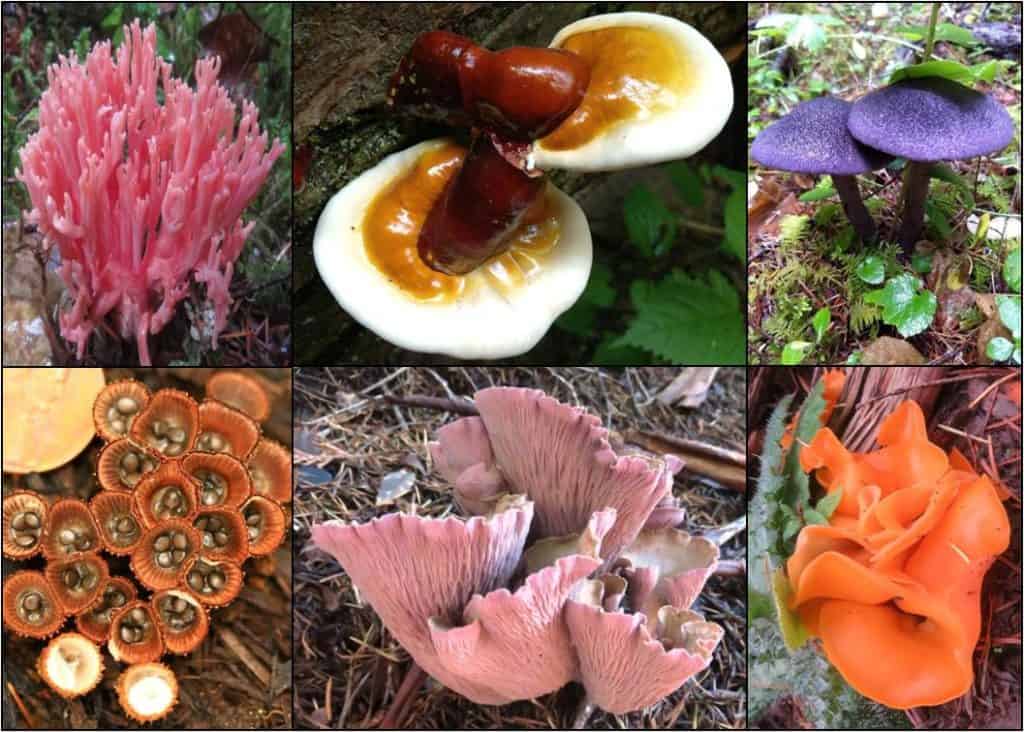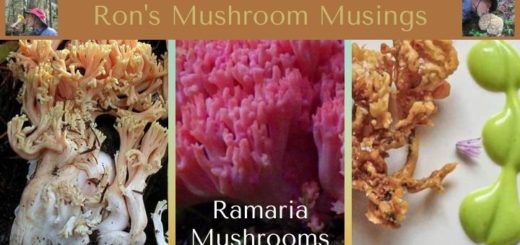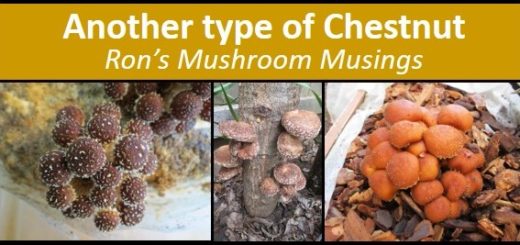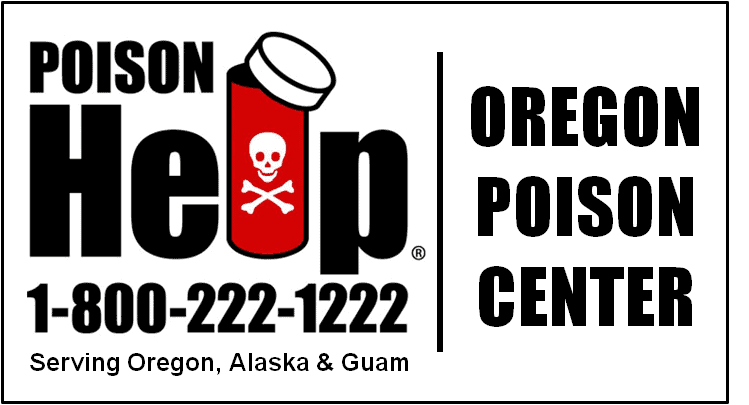Merry Christmush!

Every December Sandy starts to remind me that our Christmas cards need to be mailed out fairly soon. This is her subtle way of telling me to start thinking about and then writing our annual letter that we include with our cards. It usually encompasses events and travels and other noteworthy experiences for the year. This year my instructions were to make it a little more sentimental and perhaps even a little mushy. Yes, Sandy asked for mushy and what is mushier than a heartfelt story about Mushy-rooms. So, in place of the usual Mushroom of the Month article, we have decided to post this year’s Christmas letter. We hope you enjoy it.
Mushrooms on a Christmas card? Besides their beauty, we have learned a lot about them since we retired to Oregon. My interest and experience with mushrooms came from my mom’s German family heritage. Her family always picked wild mushrooms, which were used as flavoring and for their nutrition. So, when I was growing up, many of our dinners included cultivated and wild mushrooms. Our Aunt Hilde would include dried mushrooms called Steinpilz in Christmas packages she would mail to us from Germany. They make great gravy dishes. Flash forward many years and here we are in the woods of Oregon doing what my mom’s family did many years earlier. Not just hunting for select edibles but, as the pictures on the front of this card shows, being amazed at all the incredible shapes, colors, and sizes mushrooms take on. Once Oregon’s fall rains start, the forests come alive with millions of mushrooms covering the ground, popping out of fallen trees and stumps, and protruding from dead but upright trees still clinging to their spot in the woods. With thousands of varied species of mushrooms living in the same location, it would be reasonable to think they were all trying to dominate their particular habitat. Actually, they all seem to be able to coexist and share the resources available to them. Some species of mushrooms originate from a ground dwelling fungus that directly connects to plants to form a mutualistic existence. In fact, it’s estimated that up to 90% of all plants form this type of symbiotic fungal relationship. The very thought of so many varied life forms living in harmony and benefiting from those partnerships is remarkable. Next time you take a hike through the forest, keep an eye out for those marvelous mushrooms that live in your neck of the woods. You too might just find yourself getting lost in all the amazing things that happen in nature.





